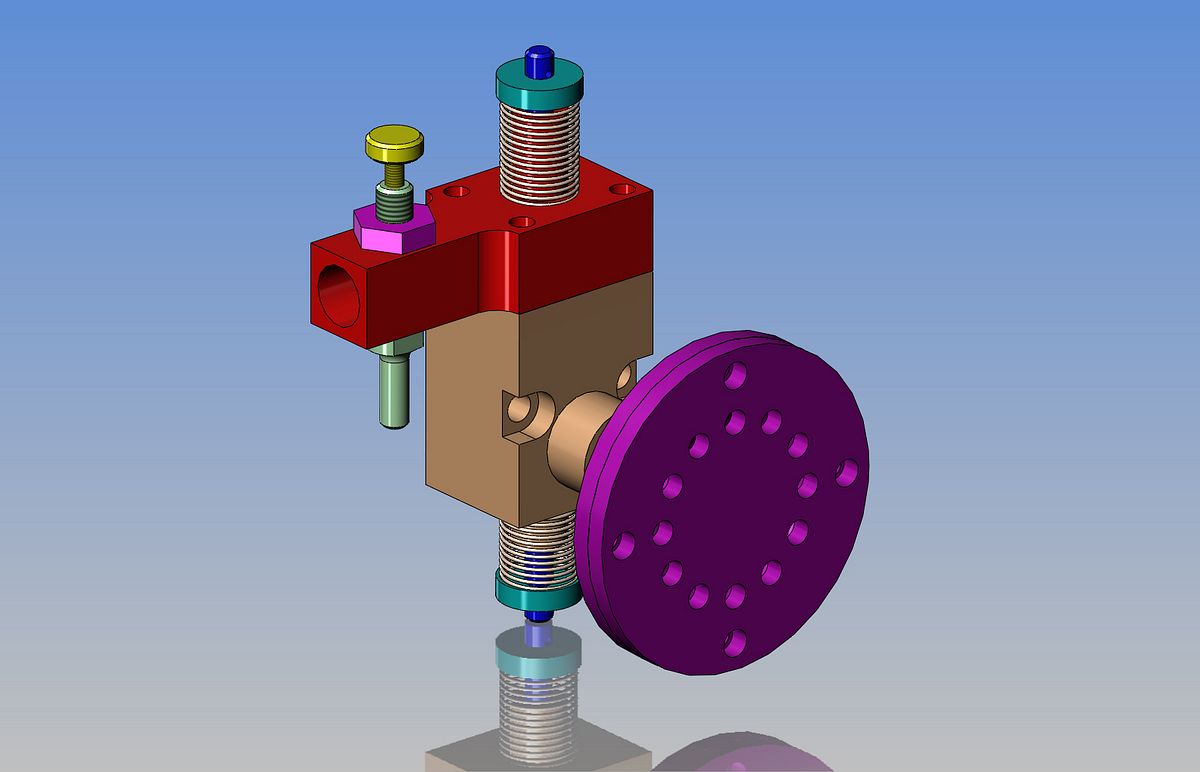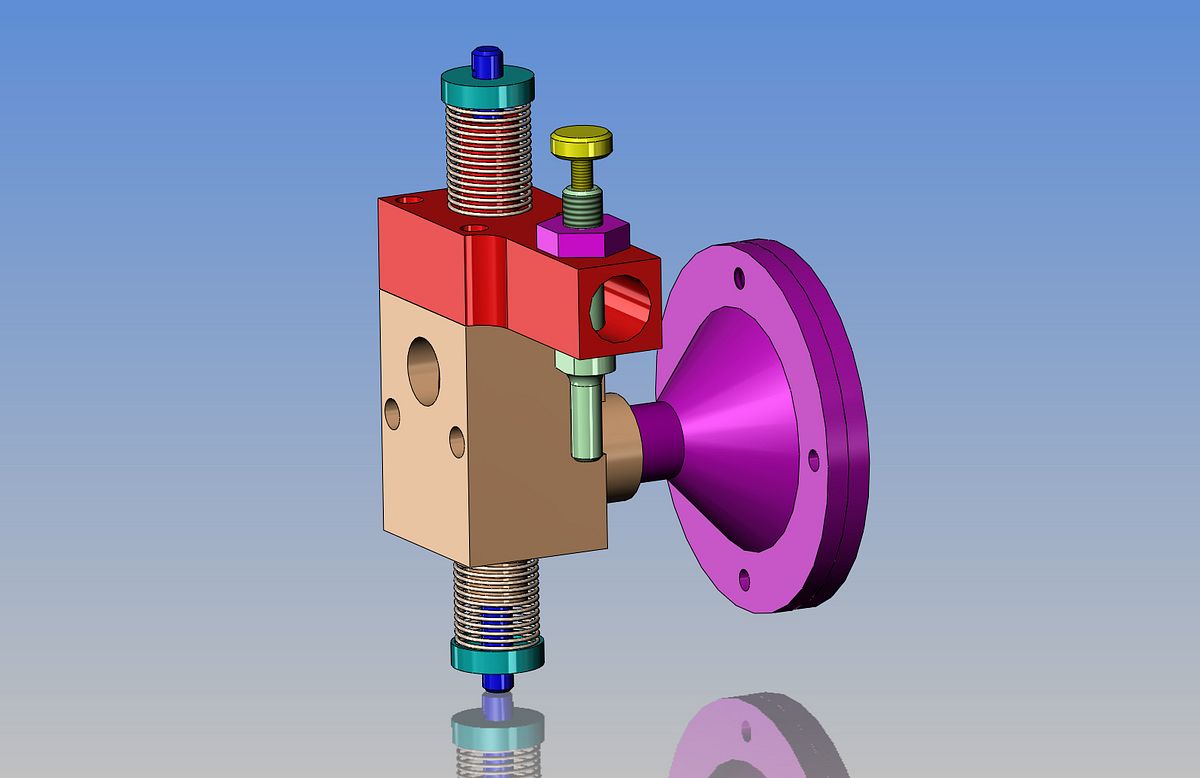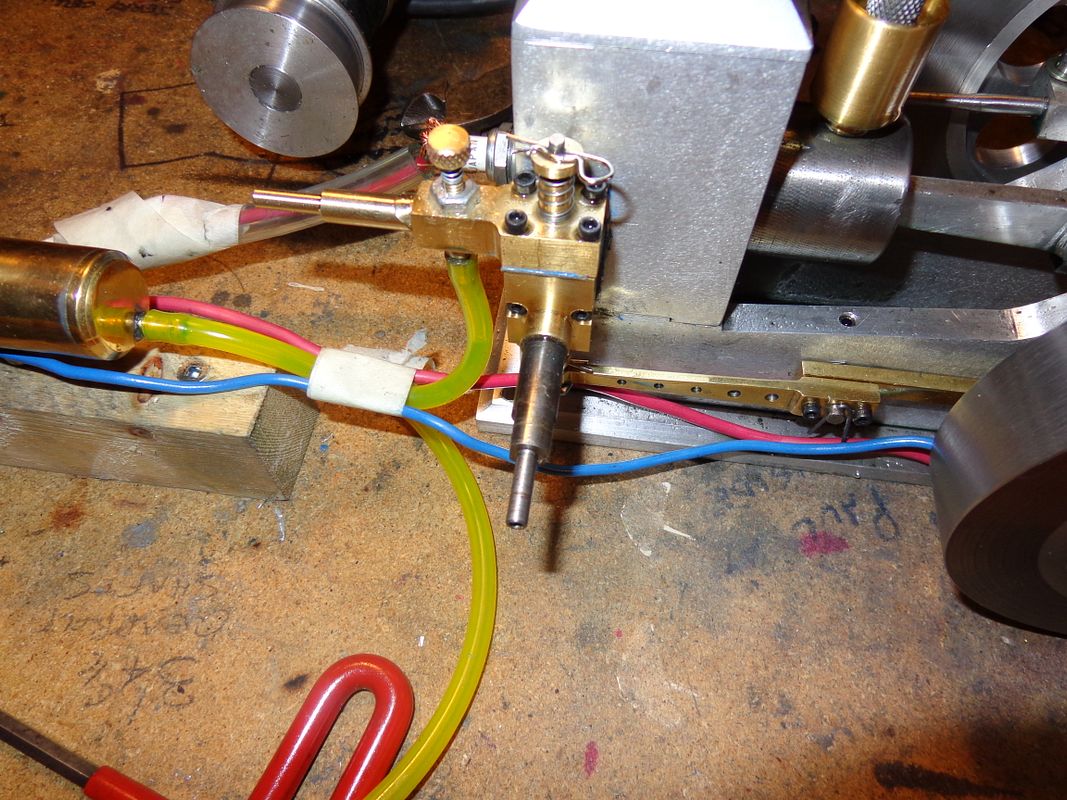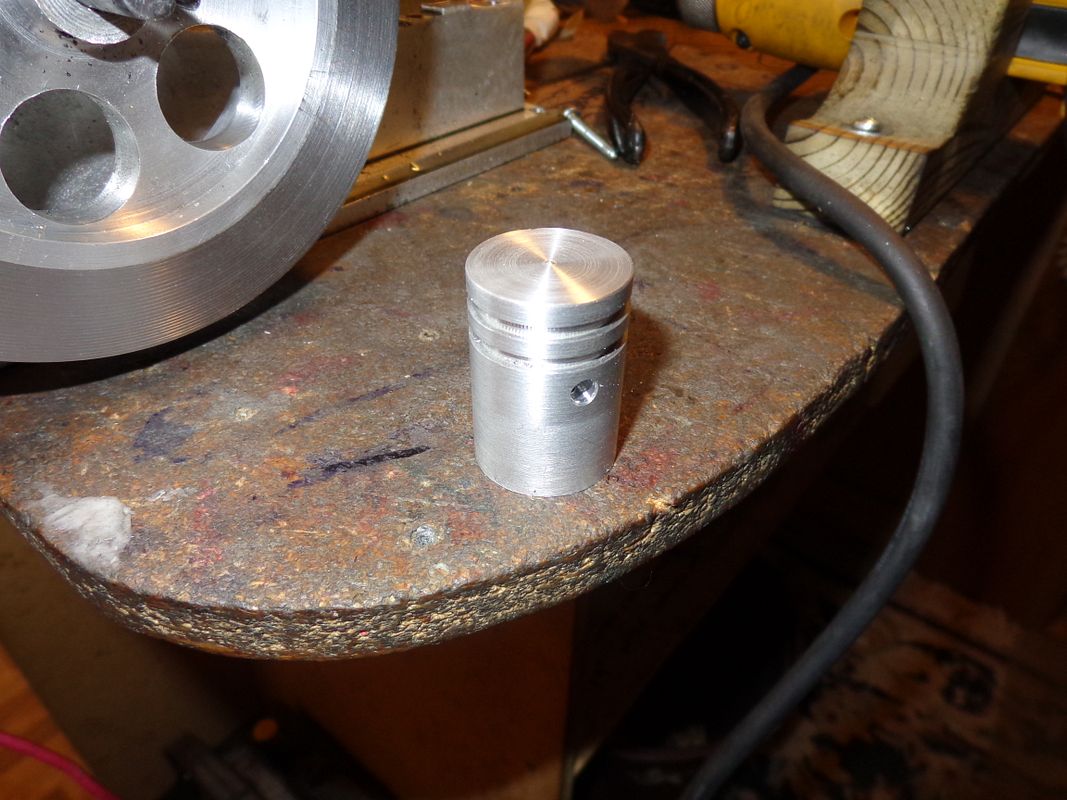Okay---The results are in. At 25 to 40 psi applied thru the exhaust port, and the engine rotated by hand untill the lifter opens the exhaust valve, allowing pressurized air to enter the combustion chamber, there is no air escaping from the intake side of the carb, but I can hear a definite hiss of air escaping around the piston at the open end of the cylinder. With the air line hooked to the intake side of the valve body, and the intake valve depressed by hand so that air can enter the combustion chamber, no air is escaping from the exhaust valve side, but again I hear air hissing at the open end of the cylinder, and when the piston is at bottom dead center I can see see bubbles appear in the oil cup for the cylinder which is always "downstream" from the rings on the piston. This tells me 3 things--The intake valve is sealing properly when there is pressure in the combustion chamber. The exhaust valve is sealing properly when there is pressure in the combustion chamber, and the rings are not sealing regardless of where the piston is in the cylinder, as established by rotating the crankshaft through 360 degrees with the cylinder pressurized. Its not a real loud hiss, but its definitly a hiss. Now on a 4" diameter piston with a 4 or 5" stroke, a little hiss like I'm hearing wouldn't rattle me to much.---But, on a 1" dia. piston with a 1 3/8" stroke, any little hiss at all is bad news. Tomorrow I will build a new piston with a Viton o-ring. I may have to wait until Monday to get the o-ring.
























![MeshMagic 3D Free 3D Modeling Software [Download]](https://m.media-amazon.com/images/I/B1U+p8ewjGS._SL500_.png)















![DreamPlan Home Design and Landscaping Software Free for Windows [PC Download]](https://m.media-amazon.com/images/I/51kvZH2dVLL._SL500_.jpg)























